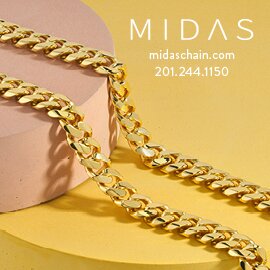On April 30, GIA will introduce the GIA Diamond Origin Report service which will confirm the country of origin of polished diamonds. To be eligible for this new service, the original rough diamonds and resulting polished diamonds must be submitted to GIA for analysis so that they can be matched to each other and to confirm the origin information provided by the participating mining company. The new report will include the country of origin, a full 4Cs quality analysis of each diamond and a report number inscription. More information about the country of origin and diamond formation will be available for each Diamond Origin Report in GIA’s online Report Check service, accessible at GIA.edu or through the QR code printed on each report.
“In recent years, there has been a growing demand for transparency and traceability in the diamond industry. Consumers want to know the origin of products and their socio-economic and environmental impact,” said Susan Jacques, GIA president and CEO. “The GIA Diamond Origin Report fits perfectly with GIA’s mission of educating and protecting the public and ensuring their trust in gems and jewelry. Consumers purchasing one of Mother Nature’s greatest treasures, a natural diamond formed more than a billion years ago, will now know more about their diamond’s journey and the positive impact it has on the communities in the countries where diamonds are discovered.”
GIA engaged with mining companies, manufacturers and retailers to identify their traceability needs and conducted consumer research which showed that 69% of U.S. bridal consumers prefer to buy a diamond with an origin story.
The Diamond Origin Report service is built on GIA’s decades of scientific research into the formation and characteristics of natural diamonds, and the Institute’s gemological examination of tens of millions of diamonds in its grading laboratories.
“When eligible polished diamonds are submitted to GIA for grading, they can be matched to the original submitted rough using physical measurements and other scientific data,” said Tom Moses, GIA executive vice president and chief laboratory and research officer. “If the data from the polished diamond and the rough match, GIA will confirm the country of origin provided by the mining company and include that information on the Diamond Origin Report.”
GIA has already processed thousands of rough diamonds ranging from 0.15 carats up to more than 100 carats. A growing number of miners, manufacturers and retailers are participating in the Diamond Origin Report program, including Alrosa, which joined the program in October 2018.
The new GIA Diamond Origin Report service will be supported by digital and print marketing – including high definition images of the original rough and the resulting polished diamond – allowing retailers to convey the unique story of each diamond to the consumer. GIA will provide descriptive brochures explaining the discovery and transformation of rough crystals to polished diamonds and relating the social and economic benefits of the industry in each country.
For more information, e-mail [email protected] or visit www.gia.edu/diamond-origin-report-service after April 30.
About GIA
Established in 1931, GIA is the world’s foremost authority on diamonds, colored stones, and pearls. A public benefit, nonprofit institute, GIA is the leading source of knowledge, standards, and education in gems and jewelry. Students around the globe turn to GIA for the knowledge, skills, and credentials that launch successful gem and jewelry careers. The world leader in gemological research, GIA’s breakthrough discoveries deepen our understanding of gemstones and the world. Through research, education, and unbiased gem grading and analysis, GIA strives to protect the gem and jewelry buying public by setting global quality standards. For more information, please visit www.gia.edu.

